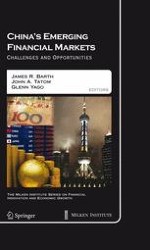2009 | OriginalPaper | Buchkapitel
The Transformation of China from an Emerging Economy to a Global Powerhouse
verfasst von : James R. Barth, Gerard Caprio Jr, Triphon Phumiwasana
Erschienen in: China’s Emerging Financial Markets
Verlag: Springer US
Aktivieren Sie unsere intelligente Suche, um passende Fachinhalte oder Patente zu finden.
Wählen Sie Textabschnitte aus um mit Künstlicher Intelligenz passenden Patente zu finden. powered by
Markieren Sie Textabschnitte, um KI-gestützt weitere passende Inhalte zu finden. powered by


 WTO
WTO  2002
2002  5
5  .
.
 2004
2004  3
3  .
.

 (1991–2000)
(1991–2000)  2003
2003  2
2  .
.

 2005
2005  9
9  28
28  .
.